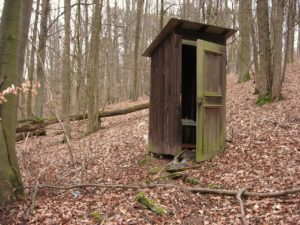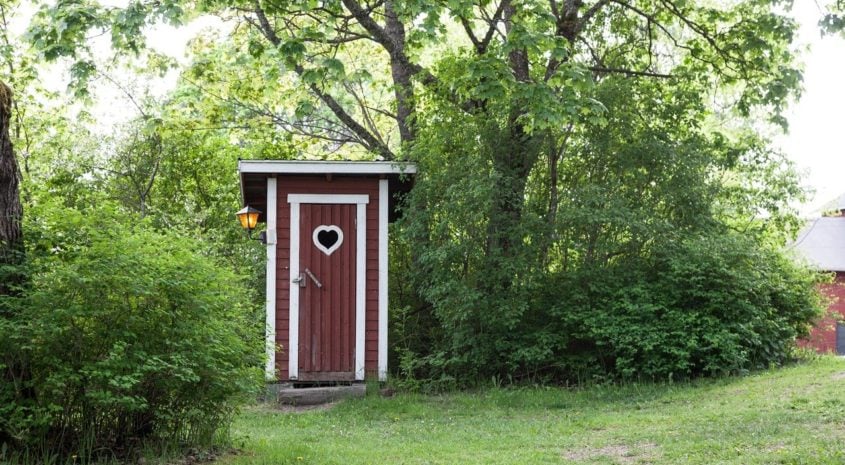Author: Tina Marshall Realtor| Recreational Land Specialist at UC Midwest Lifestyle Properties
If you’ve lived in the city most of your life, your recent country home purchase probably has you pretty excited! We at UC Midwest Lifestyle Properties are excited for you as well. We want you to enjoy country living at its best and be prepared for a few country living responsibilities.
City life has an enormous amount of conveniences. The same can be said of country living, it just comes in different ways. What you never had to be responsible for in the city, you now are responsible for in the country. Don’t let that scare you.
SEPTIC SYSTEMS

One of the many responsibilities of living in the country is maintaining your own septic. A septic system is a means of storing your wastewater and sewer waste. A great website to check out is howstuffworks.com. They have a great article on “How Sewer and Septic Systems Work” by Marshall Brain, complete with diagrams.
There are 3 common septic systems:
- Conventional Septic System
- Mound Septic System
- Septic Holding Tank
CONVENTIONAL SEPTIC SYSTEM
For today’s purposes, we will keep it short and simple. Flushing your toilet, running a load of laundry, or brushing your teeth all generates wastewater. This water will flow its way through your home’s pipe system and into the main sewer pipe and out into the septic tank. Septic tanks are a large cement tank or a steel tank buried into the ground.
As wastewater and sewer arrive into the septic tank, “solids” sink to the bottom, the middle layer contains fairly clear water and the top contains a layer called “scum” (oil and grease) water. Pumping your septic tank out clears the tank of solids and continues the free flow of water to the drain field.
Wastewater entering the septic tank displaces water that is already in the tank, sending it out through a pipe into a distribution box, and from there into a drain field. In the drain field, the water is filtered and slowly absorbs back into the ground. Most septic systems are gravity run, it is considered a passive septic system.
Your township and or county will have laws regarding the inspection and pumping of your septic system. Some properties have “covenants” on the property pertaining to septic systems and you as the owner of the land must abide by the covenant.
Your local area will have septic pumping services available that provide pumping and inspection for a fee. Check with your neighbors to see who they would recommend.
MOUND SEPTIC SYSTEM
The mound septic system is used primarily if you have areas of shallow soildepth, high groundwater, or shallow bedrock. It requires a considerableamount of yard space and yes, it does look like a mound.
The mound is made up of topsoil with a layer of sand beneath it. Within thesand lies a drain field. Water flows from the septic tank into a pump chamber. From there the pump chamber pumps it to the mound in appropriate doses.
Treatment of the water begins as it discharges to the trench and filters through the sand, and then disperses into the surrounding soil.
SEPTIC HOLDING TANK
Septic holding tanks are an easy means of storing water waste and sewer. The downside of holding tanks? They require frequent pumping every few weeks or at least once a month.
WHAT’S IT GOING TO COST ME?
 If you have to install a new conventional system, prices will vary from region and current market supply costs. According to Homeguide.com, in 2020 on average in the Midwest, you can figure it will cost you $3,280 to $5,040. A
If you have to install a new conventional system, prices will vary from region and current market supply costs. According to Homeguide.com, in 2020 on average in the Midwest, you can figure it will cost you $3,280 to $5,040. A
mound system will run you about $15,000.00. And your septic holding tank will cost around $1,150 – $1,690 for a 1,250-gallon tank. Add in extra money for excavation and installation. Keep in mind, your septic holding tank will
incur monthly charges for having your holding tank pumped. There are many other choices available for septic systems. Check with your local township and find out what you need to do to comply with local septic
care and pumping requirements.
RESOURCES:
https://www.epa.gov/septic/types-septic-systems
https://buildingadvisor.com/buying-land/septic-systems/alternative-septic-systems/
https://www.aero-stream.com/septic-system-cost.html
https://home.howstuffworks.com/home-improvement/plumbing/sewer2.htm
https://inspectapedia.com/septic/Septic_System_Types.php
http://www.chavissepticservices.com/septic-tanks-vs-holding-tanks/
https://homeguide.com/costs/septic-tank-system-cost
Visit My Web Site, Like me on Facebook
Author:
Author: Tina Marshall Realtor| Recreational Land Specialist at UC Midwest Lifestyle Properties


